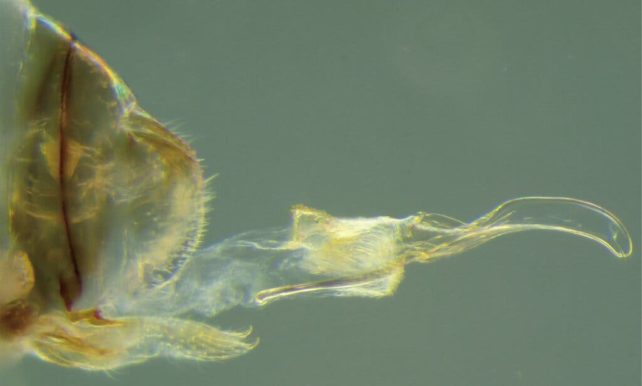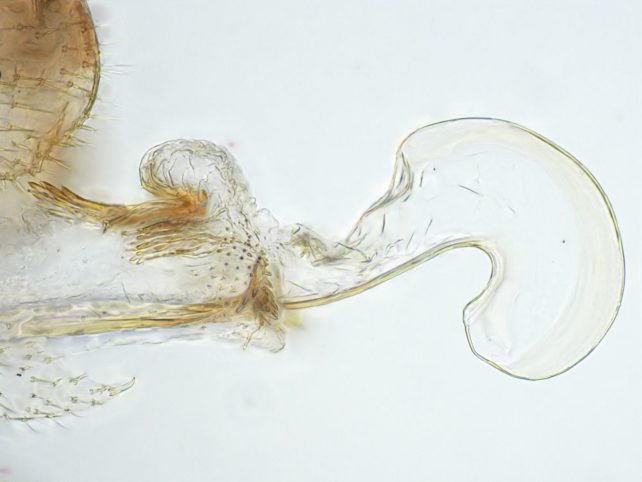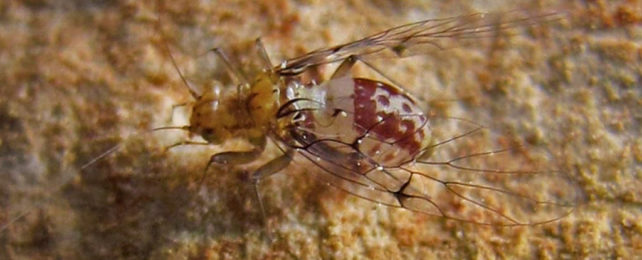The animal world is full of delightfully odd genitals, from argonauts that detach their own sperm-bearing arm and send it off to find a female to mate with, to echidna males with four tipped penises. Some insects have even weaponized their genitals to fight predators.
In another stand-out arrangement, male and female cave-dwelling barklice Neotrogla (distant relatives of booklice) have swapped typical genital structures, with females wielding protruding parts and the males possessing a cavity.
Hyena and elephant females also have protruding bits – elongated genitalia referred to as pseudo-penises – but males of each species continue to sport dangly parts too.

In the case of bat-poop-eating barklice, however, males have a vagina-like indentation, into which females insert their penis-like structure – called a gynosome – to hook on and vacuum up their sperm.
Building on previous research, Hokkaido University entomologist Zixin Cheng and colleagues used micro computer tomography to create 3D models of the copulating winged insects from caves in Brazil, to work out how these structures function and perhaps determine how this complete genital reversal came about.
They confirmed that unlike other female protruding genitals such as pseudo-penises, the gynosome is a more complex organ with specific muscles and pipes to match its unique sucking purpose.
Using hooks at the base of the gynosome, females can cling onto males for a shockingly long time – up to 70 hours, in fact.
One set of muscles helps the gynosome unfurl and enter the male, where it inflates with any semen it sucks up. Another set of muscles then contracts the organ so that it can deposit the sperm into a pair of storage slots inside the female's body.
"This unique feature renders female-female competition more intense, favoring the evolution of a female penis," the team writes in their paper.

With two sperm storage organs, Neotrogla females can stock up with double the amount of sperm. This extra storage may provide a clue as to why the insects are so active in their efforts to find semen.
The sperm comes packaged within nutrient filled spermatophores. In resource-deprived cave environments, these nutrients could serve another vital purpose. What's more, females have been observed extracting the nutritious sperm packages even when they're too young to reproduce.
"The most likely explanation is that [evolution of] the female penis was promoted by sexual selection to receive more seminal nutrition," Cheng and colleagues explain.
Females may be sucking the males dry for food, the team suspect.
Nuptial gifting of nutrients through spermatophores is known in other insects, but tracing what happens to the male offering within the female would be required to confirm this.
The lack of reliable grub in Brazilian caves "is probably a major factor facilitating the evolution of sex-role reversals," as entomologist and senior author Kazunori Yoshizawa at Hokkaido University in Japan explained to the New York Times.
This research was published in Royal Society Open Science.
